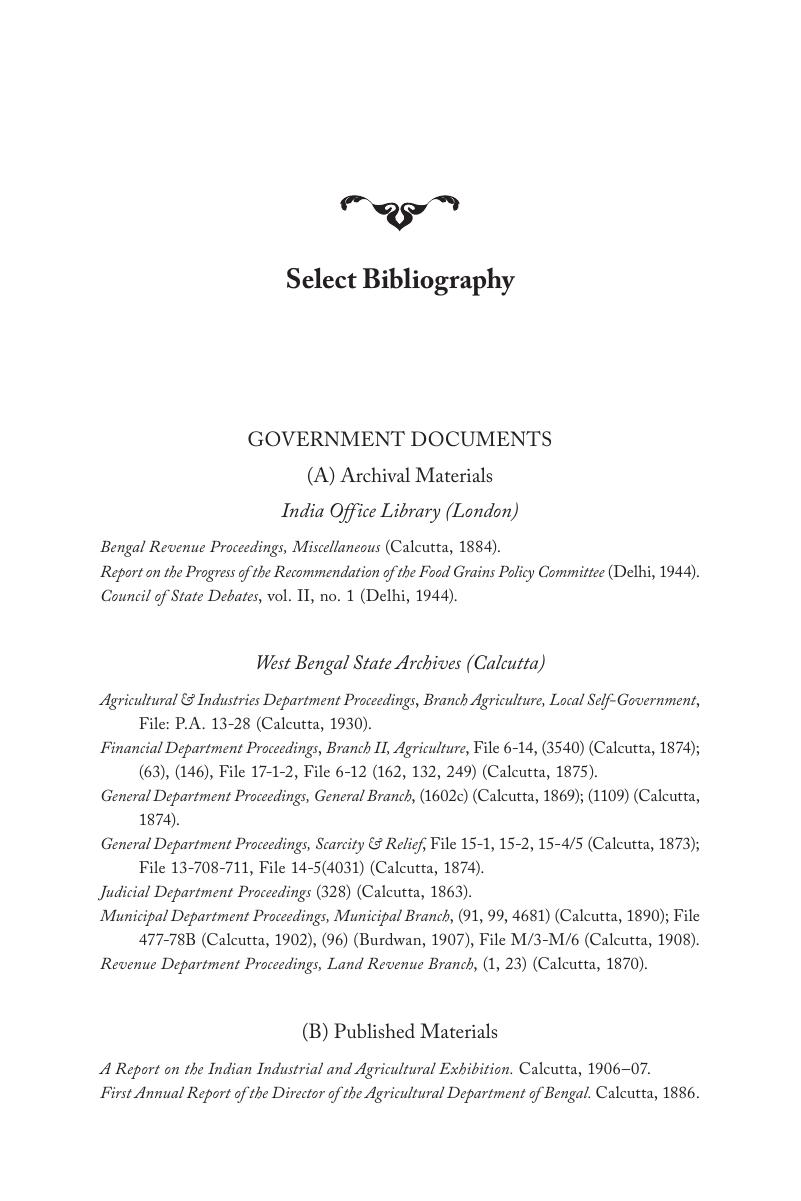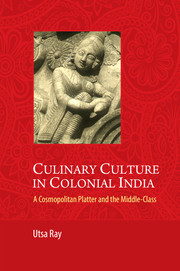Book contents
- Culinary Culture in Colonial India
- Copyright page
- Contents
- List of Images, Maps and Tables
- Preface
- Introduction
- 1 Introducing ‘Foreign’ Food
- 2 The Cosmopolitan and the Regional
- 3 Aestheticizing Labor?
- 4 Constructing ‘Bengali’ Cuisine
- 5 Fashioning the ‘Bengali’ Middle-Class
- Conclusion
- Select Bibliography
- Index
- References
Select Bibliography
Published online by Cambridge University Press: 18 December 2014
- Culinary Culture in Colonial India
- Copyright page
- Contents
- List of Images, Maps and Tables
- Preface
- Introduction
- 1 Introducing ‘Foreign’ Food
- 2 The Cosmopolitan and the Regional
- 3 Aestheticizing Labor?
- 4 Constructing ‘Bengali’ Cuisine
- 5 Fashioning the ‘Bengali’ Middle-Class
- Conclusion
- Select Bibliography
- Index
- References
Summary

- Type
- Chapter
- Information
- Culinary Culture in Colonial IndiaA Cosmopolitan Platter and the Middle-Class, pp. 239 - 264Publisher: Cambridge University PressPrint publication year: 2015



